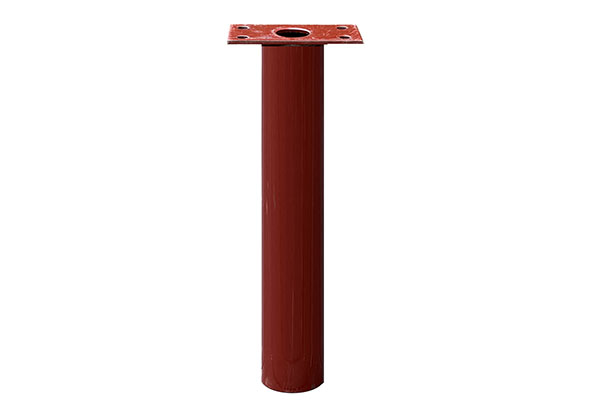Steel columns are essential structural elements in buildings, bridges, and industrial facilities. They are designed to support heavy loads, resist buckling, and provide stability. One common question that arises is: how much weight can a 4-inch steel column hold? The answer depends on multiple factors, including the type of steel, wall thickness, height of the column, and how the load is applied.

Understanding Steel Column Strength
A steel column’s strength is not determined solely by its diameter. While a 4-inch dimension gives us the basic size, its load-bearing capacity also relies on:
-
Wall Thickness (Gauge or Schedule) – A thin-walled 4-inch steel pipe will carry significantly less weight than a heavy, thick-walled version.
-
Type of Steel – Common grades like ASTM A36 or structural steel alloys vary in strength. High-strength steel can bear more load.
-
Length of the Column – Shorter columns resist buckling better, while taller columns may fail under smaller loads due to bending.
-
Load Type – Whether the load is axial (straight down), eccentric (off-center), or lateral (sideways) greatly affects capacity.
-
End Conditions – A column fixed at both ends will carry more weight than one resting loosely on supports.
Approximate Load Capacities
For a 4-inch diameter structural steel column with moderate wall thickness (such as Schedule 40 pipe):
-
A short column (around 3–4 feet tall) may safely support up to 20,000–25,000 pounds under ideal conditions.
-
A taller column (10–12 feet) may support only 7,000–12,000 pounds due to buckling risks.
-
Heavier schedules (thicker walls) like Schedule 80 can increase capacity by 30–40%.
These figures are only rough estimates. In actual construction, engineers must calculate precise loads using formulas from the American Institute of Steel Construction (AISC) or similar codes.
Engineering Calculations
The load capacity is often calculated using the Euler’s Buckling Formula:
Pcr=π2EI(KL)2P_{cr} = \frac{\pi^2 E I}{(K L)^2}
Where:
-
PcrP_{cr} = critical load (maximum weight before buckling)
-
EE = modulus of elasticity of steel (about 29,000,000 psi)
-
II = moment of inertia (depends on column cross-section)
-
KK = effective length factor (depends on end support conditions)
-
LL = unsupported length of the column
This formula shows how both material properties and geometry directly influence capacity.
Real-World Considerations
When using a 4-inch steel column, it’s crucial to factor in safety margins. Engineers typically design with a safety factor of 2 to 3, meaning the actual working load is much lower than the theoretical maximum.
Other considerations include:
-
Welding or Bolted Connections – Weak joints can reduce strength.
-
Corrosion Protection – Rust can thin walls and compromise load capacity.
-
Dynamic Loads – If the column supports moving equipment, extra strength is needed.
Applications of 4-Inch Steel Columns
-
Residential construction – Used as support posts in basements, garages, or porches.
-
Industrial settings – Support for mezzanines, machinery platforms, or light structural frameworks.
-
Agricultural buildings – Common in barns, sheds, or greenhouses.
Conclusion
A 4-inch steel column can hold anywhere from several thousand to over twenty thousand pounds, depending on wall thickness, column height, and load conditions. While rough estimates can give a general idea, only a structural engineer can provide safe, precise calculations tailored to your project. If you’re planning to use steel columns in construction, always consult building codes and engineering guidelines to ensure safety and reliability.
In short, while small in size, a 4-inch steel column is a powerful support when used correctly, but its strength must always be evaluated carefully.
Post time: Sep-25-2025



